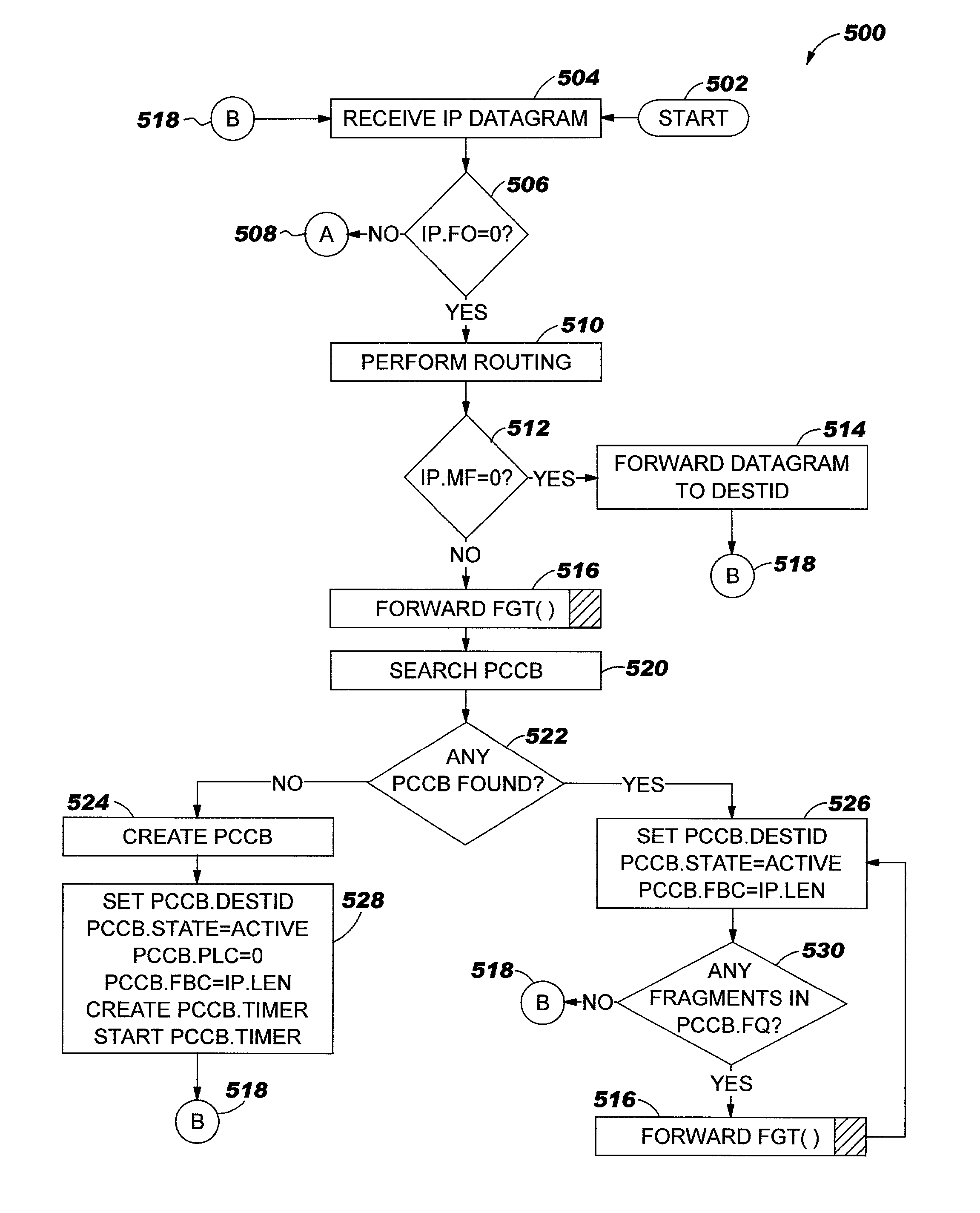Method and system for efficient layer 3-layer 7 routing of internet protocol ( IP ) fragments
a technology of internet protocol and fragments, applied in data switching networks, multiplex communication, instruments, etc., can solve the problems of content-based routing that is necessitated today, no protection against loss, duplicate, misdelivery,
- Summary
- Abstract
- Description
- Claims
- Application Information
AI Technical Summary
Problems solved by technology
Method used
Image
Examples
Embodiment Construction
[0040] The present invention is directed to a system and method for efficiently routing fragments of a datagram at layer 3 through layer 7 of the OSI model (i.e., content-based routing) without reassembling the fragments at these layers.
[0041] A main element of the inventive method and system for content-based routing is the maintenance of a context for a fragmented IP datagram. This is preferably accomplished by creating a Packet Cache Control Block (i.e., "PCCB") for every fragmented IP datagram to be routed at layer 3 through layer 7 of the OSI model utilizing content-based information. The PCCB is a software or hardware construct, or a combination thereof, maintained at network nodes that process IP datagrams for performing content-based routing. The network nodes include, but are not limited to, routers at the core or at the edge of a network, server load balancers, and firewalls. FIGS. 5-8 provide a description regarding content-based routing of fragments of a fragmented IP da...
PUM
 Login to View More
Login to View More Abstract
Description
Claims
Application Information
 Login to View More
Login to View More - R&D
- Intellectual Property
- Life Sciences
- Materials
- Tech Scout
- Unparalleled Data Quality
- Higher Quality Content
- 60% Fewer Hallucinations
Browse by: Latest US Patents, China's latest patents, Technical Efficacy Thesaurus, Application Domain, Technology Topic, Popular Technical Reports.
© 2025 PatSnap. All rights reserved.Legal|Privacy policy|Modern Slavery Act Transparency Statement|Sitemap|About US| Contact US: help@patsnap.com



